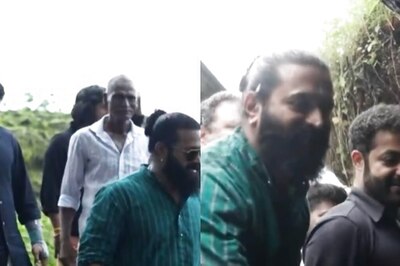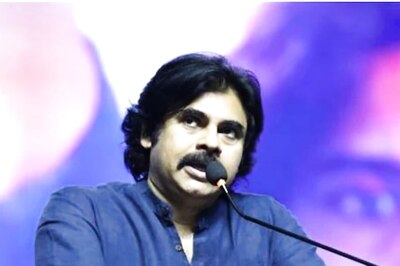
views
Historical significance of temples has always been an area of interest for historians and archeologists. But instead, a group of 32 artists have taken inspiration from the sheer beauty and silence of these sculptures and the architecture that adorns the temple walls. Hoping to create a stronger culture of visiting places of historical importance, Siri Artists’ Association picked up the idea of bringing these places alive on canvas to promote the State’s heritage. After their first two exhibitions, ‘The Silent Rocks’ which reflected the Golconda fort and ‘The Dancing Stones’ of the Ramappa Temple near Warangal, the association’s latest show, ‘The Legend of Alampur’, is centered around the temple of Goddess Jogulamba.
Over 42 frames of colour, sand and clay takes one on a journey into the 7th century Dravidian and Chalukyan architecture of Alampur. Also known as Dakshin Kashi, it is situated 200 kms from the city, on the banks of river Tungabhadra. One of the 18 shakti peethas in India, it is an important archaeological site.
The temple also holds another significance. “The old temple of goddess Jogulamba was destroyed by the Bahamani Sultans. The idols were protected elsewhere in other temples till 2005, when a new temple was constructed in the same place,” says B Padmavati, one of the participants at the exhibition.
Though limited to the structure’s complex and its surroundings, every painting portrays a different angle of the temple. Some artists have taken inspiration from the Gopuram (temple tower), while some chose the sculptures of women, and others from the archeological museum at the temple.
“The temple has a very unique archaeological museum in the temple premises. All the idols that were preserved by the Indian Archeological department have been stored here. So, many of us clicked photographs of the sculptures in the temple and then started painting,” explained another artist P Anupama.
Even the paintings at the expo were not limited to acrylic colours or monochromes. Artists fused in different styles and techniques and added earthy elements like sand, mud and clay. Others were more ‘handy’ using materials m-seal, giving an overall live affect to the paintings.
There were a few, which attracted the most attention, like, a painting by artist Yam Prasad, which portrays Nandi, with Shiva and Parvati sitting on his back. This Nandi is perhaps the only kind in the country with such a setting. Another one by B Padmavati displayed a temple view with a pond, that has a woman fetching water from it. Also quite fascinating was a 3D painting of a temple wall by Swamy, the founder of Siri, done by pasting a textured cloth on the canvas. The other artists tried the Kalamkari effect, giving the paintings a more regional feel, while some stuck to monochromes to make them look rustic. Usha Devi’s painting of a woman’s sculpture which was a part of the temple’s museum, looked more realistic with her usage of sand. Bright strokes of yellow on one side gave the painting a cave setting, with just one part exposed to light.
The paintings are on display at the Muse Art Gallery, Hotel Courtyard Marriott, from 11:30 am to 7 pm, till August 4.




















Comments
0 comment